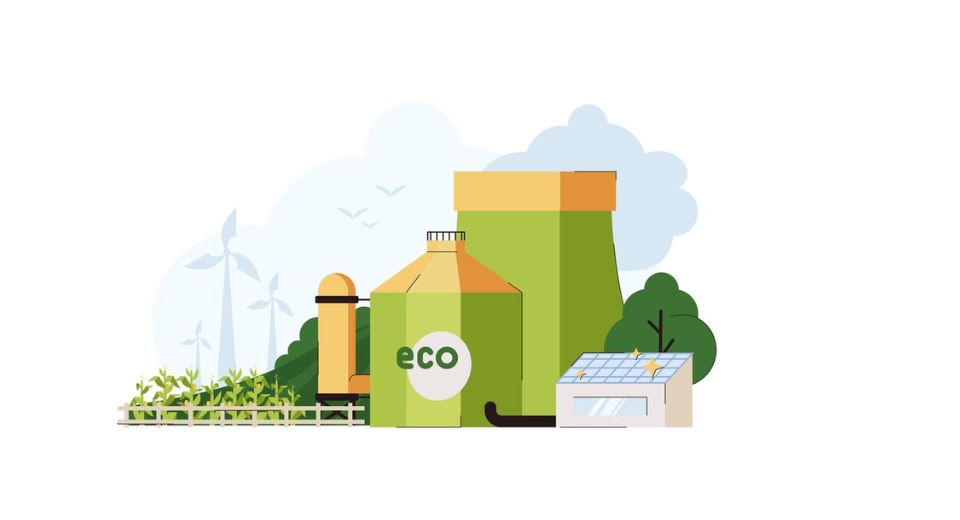
Feb 03, 2025

The Metastat Insight report on the global biomass gasification market captures the dynamics and changes driving the industry. Biomass gasification, long touted as the future of energy production, continues to evolve in response to the demands of today. As companies and governments look for alternative means of sustainable energy, the growth of this sector is both a testament to innovation and the need for cleaner sources of energy.
Recent interest in biomass gasification is fueled by both the prospect of its decreasing reliance on fossil fuel usage and waste management. It enables the organic material to be transformed into syngas or synthesis gas, hence unlocking further prospects of a sustainable circular economy. It is thus getting increased focus worldwide due to increased talk of carbon neutrality; its utility lies more particularly in areas requiring uninterrupted, steady power supply. Unlike conventional combustion, gasification offers a higher energy output and flexibility, which can be easily adapted to various industrial applications.
While there is a significant technological advancement, the industry's path is also defined by some underlying complexities. Infrastructure readiness, regulatory frameworks, and feedstock availability are among the key factors that impact adoption rates in different regions. Some countries rapidly integrate biomass gasification technologies due to favorable policy environments and well-structured incentives. Others face challenges brought about by high capital costs and a lack of standardized regulations, which creates a deficit in investment confidence. These variations underscore the different speeds at which biomass gasification is being embraced worldwide.
One of the most interesting shifts in the sector is the diversification of feedstock usage. While woody biomass has been conventionally the favored feedstock in gasification applications, recent technology developments make the use of other materials, from agricultural residues, municipal solid wastes, to algal residues as well possible. This broad-based approach reduces feedstock dependency upon specific sources yet supports the intent of waste-reduction policies within the international scope. It thereby opens up an entirely new front for regions without previously being capable of exploiting bioresource potentials within their own means.
At the same time, technological upgrades are improving gasification plant efficiencies. From the design of new reactors to superior tar removal mechanisms, research work is continuously directed toward making this process more viable in economic terms. Automation and digital monitoring techniques further improve efficiency, decrease the cost of running the plants, and ensure higher consistency in the production of syngas. These factors, therefore, have a bearing on the long-term viability of biomass gasification in markets where competitive cost against traditional energy sources still remains a big issue.
In addition to the technological leaps, regional dynamics factor into market trends in decisive measures. Industrial nations aiming to decarbonize heavily are investing heavily in the projects involving biomass gasification as part of a larger energy transition framework. In developing countries, feasibility analysis is conducted and weighed against the existing models, and its potential is weighed against much more established renewable sources such as solar and wind. It creates a crumbly landscape of adoption where deployment rates differ according to economic and environmental priorities.
The changing nature of the industry further becomes evident with the investment trends. Private sector investment has seen a rise since companies realize they gain both sides from energy generation and waste mitigation. Public-private collaborations have strengthened with governments giving subsidies and providing grants for research, which facilitate quicker commercial applications. Although financial scenarios are very fluid, investment interest from many stakeholders indicates the commitment to a long-term energy source in the form of biomass gasification.
As energy security issues take central stage, here again, is a compelling growth case for sustainable growth of the industry based on biomass gasification. Its viability to produce syngas has the potential both for power generations as well as industrial heating even in the cases of synthetic fuels manufacture adds tremendous appeal. Its relevance with an increased push to hydrogen economy-based models further throws up new junctures by relating it towards green hydrogen manufacturing.
Environmental considerations remain integral to the discourse surrounding biomass gasification. While significantly cleaner than fossil fuel combustion, emissions control and residue management require ongoing attention. Research institutions and technology providers are actively working on minimizing the environmental footprint of the process, ensuring that sustainability goals are met without compromise. Carbon capture integrations and improved ash disposal methods are some of the areas where innovation continues to drive progress.
Moving forward, the curve of the international biomass gasification industry will most likely be dictated by policy and technological developments coupled with the emergence of new economic conditions. Some countries that set themselves as an early mover would benefit from having first-mover advantages to develop strategic partnerships while expanding their energy portfolios. However, the more slowly the other regions will embrace this technology, the higher its incremental growth because costs decrease while frameworks mature.
The industry is both promising and dynamic, with a slew of factors influencing this direction. This international study, conducted under Metastat Insight, presents a deep view of these trends. It offers a window into the broader consequences of the evolution of biomass gasification. With the transition of the world toward more sustainable energy solutions, the role of biomass gasification is bound to become a key feature in this discussion, thus bridging the gap between dependence on traditional sources of energy and the future in renewables.
Drop us an email at:
Call us on:
+1 214 613 5758
+91 73850 57479